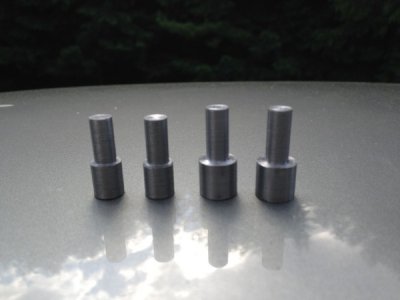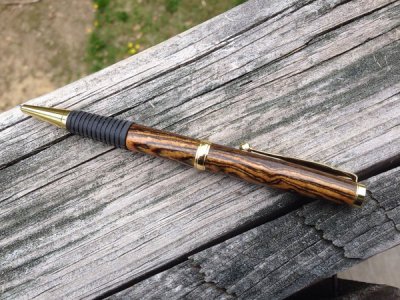- Joined
- Dec 20, 2012
- Messages
- 9,422
Your cart looks pretty sturdy and if you're looking for a quick fix then make or buy some leveling feet, not so much to level the cart but to get the whole thing solid on the floor. You can attach the feet (you know, the screws with pads on the ends) to the sides of the cart and hopefully that will be solid enough and still enable you to move it at need. What you need is a solid base upon which the lathe can be leveled. Again, by that I mean both ends of the lathe being in alignment so there is no twist in the bed and if you have that then you're good. The cart itself does not have to be level, although you will find that if you move the lathe around the cart itself will twist and so will the wooden base and this can introduce twist in the lathe bed. That's why a cabinet that doesn't move around is better and a metal base is even better as it doesn't move with changes in humidity.
The bolts you mentioned are intended to lock the lathe down to the surface it is sitting on. In order to level the lathe you will need to use shims near these bolts. Many guys use horseshoe shaped shims and the bolt passes through the center. I hate the tedium of working with shims so I would personally get some 1/2" plate; drill and tap for 2 heavy bolts in each plate and inset the plates into the top, one under each end 0f the lathe, so the bolts can be used to dial out the twist in the bed. You can then use the lockdown holes to bolt the thing down.
If you're going to do mainly wood turning then this may not be necessary but if you want an accurate metal turning lathe then you are going to have to level it.
As an aside, I know a 98 year old plantation machinist. He turns huge bowls on two big engine lathes. He lag bolts the bowl blanks onto his faceplate and winches the thing into position. He makes the most beautiful bowls, larger than most turners can make. This guy throws a fish net for dinner 3-4 times per week and plays the Sax every night. Still sharp as a tack but getting a bit deaf! They don't make 'em like they used to.
The bolts you mentioned are intended to lock the lathe down to the surface it is sitting on. In order to level the lathe you will need to use shims near these bolts. Many guys use horseshoe shaped shims and the bolt passes through the center. I hate the tedium of working with shims so I would personally get some 1/2" plate; drill and tap for 2 heavy bolts in each plate and inset the plates into the top, one under each end 0f the lathe, so the bolts can be used to dial out the twist in the bed. You can then use the lockdown holes to bolt the thing down.
If you're going to do mainly wood turning then this may not be necessary but if you want an accurate metal turning lathe then you are going to have to level it.
As an aside, I know a 98 year old plantation machinist. He turns huge bowls on two big engine lathes. He lag bolts the bowl blanks onto his faceplate and winches the thing into position. He makes the most beautiful bowls, larger than most turners can make. This guy throws a fish net for dinner 3-4 times per week and plays the Sax every night. Still sharp as a tack but getting a bit deaf! They don't make 'em like they used to.




